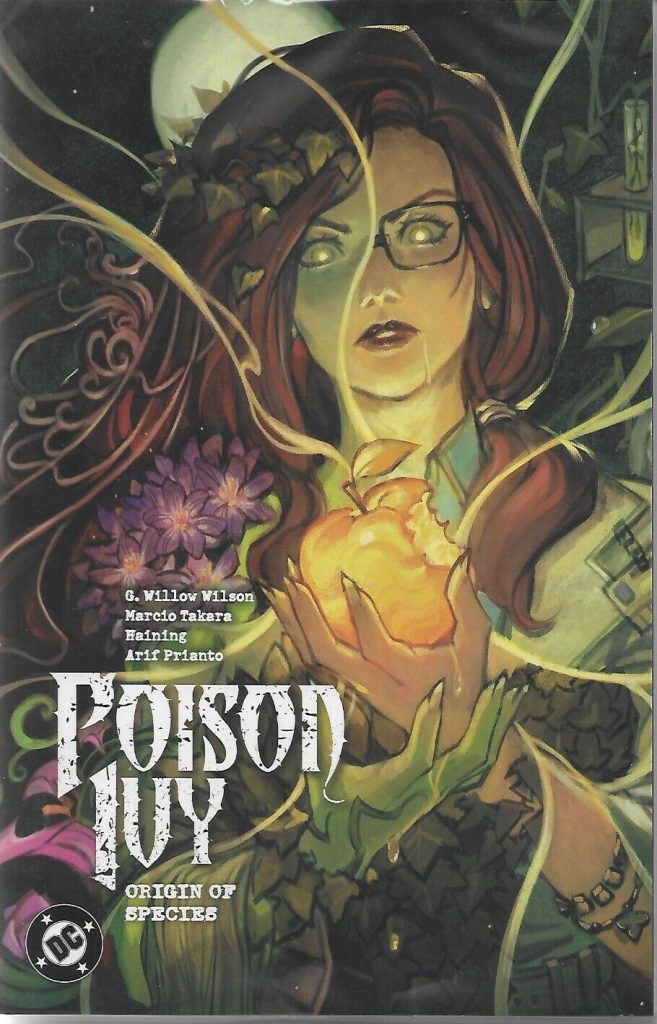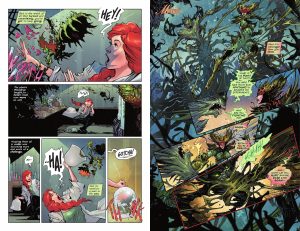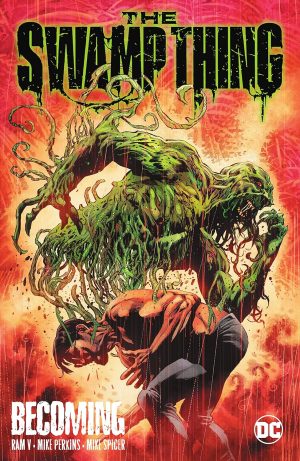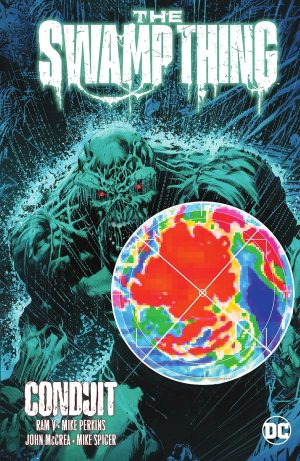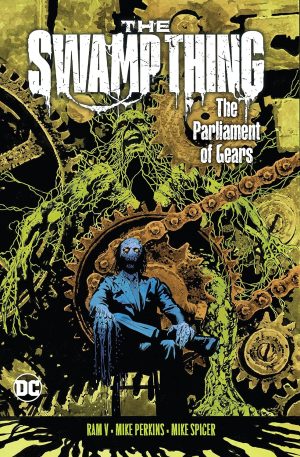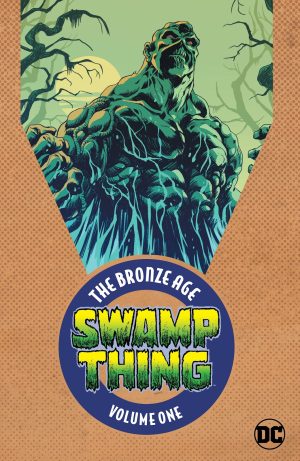Review by Frank Plowright
The origin of Poison Ivy runs along the lines of keen student Pamela Isley becoming infatuated with radical and plain unethical botanist Jason Woodrue who experimented on her. It’s recapped over Origin of Species as a prelude to the return of Woodrue as touted at the end of Mourning Sickness. Readers already familiar with Ivy’s origin shouldn’t assume they know everything, as G. Willow Wilson builds on and considerably broadens events and features additional characters. Alec and Linda Holland are just a tease, but readers may suspect a tragic fate for a newly introduced person with a larger role.
It addresses what has been the only continuing weakness of the series to date, Ivy’s unconvincing personal relationships, which have transmitted as pandering to an audience rather than having a genuine foundation. Ivy’s gradual realisation of her feelings for a co-worker are altogether more realistic, and their shared interest supplies a basis. Wilson also explores exploitative relationships, which adds an additional form of horror to a series that’s always used the genre.
Because there’s not the full floronic flourish of Ivy in the past Marcio Takara’s art shows greater restraint, and the colour work of Arif Prianto is more subtle over the origin story. It’s still well told, though, and it looks great. Prianto really lets loose in the company of new artist Haining on the present day chapters. Haining’s allocated a battle between constantly morphing entities and she depicts them in incredible detail, along with what’s discarded from them, and horror is now the primary mood.
For all the desperation about what manifests, the present day events aren’t as compelling. It’s primarily because the threat as drawn is extremely abstract, and it’s partly because it’s not Ivy who’s really decisive. She needs the ensemble cast Wilson has built around her, which may be the point. The ending, though, is clever, making use of the cryptic utterances of one of that cast and via involving a spiritual imperative not often used in what’s essentially a superhero series.
A line could be drawn here, but a final panel, not so much a cliffhanger as a puzzled comment, leads into what comes next.
